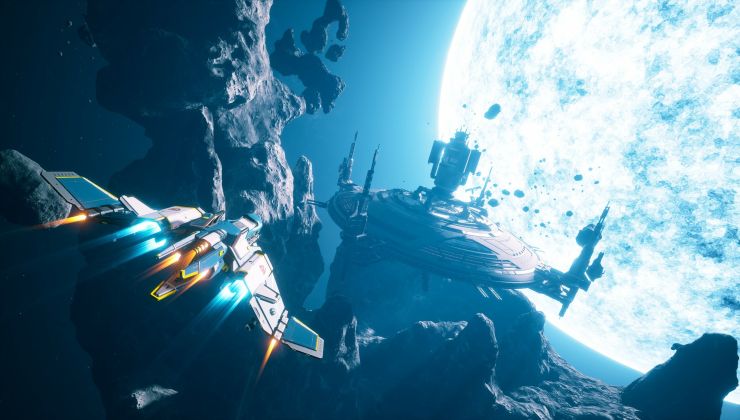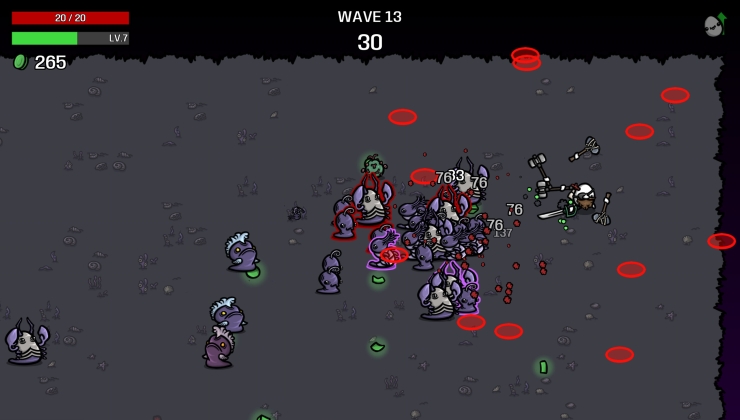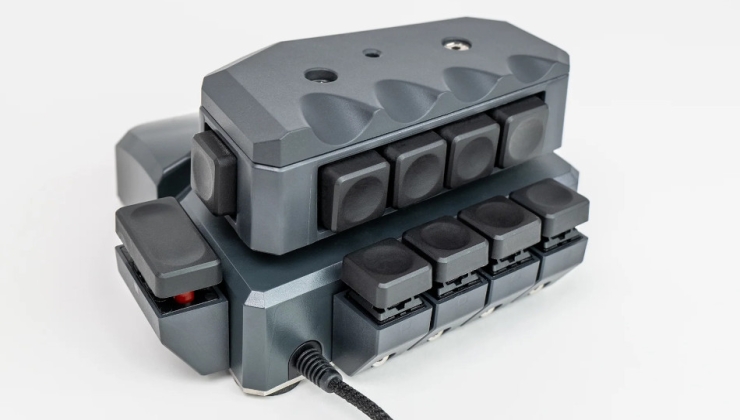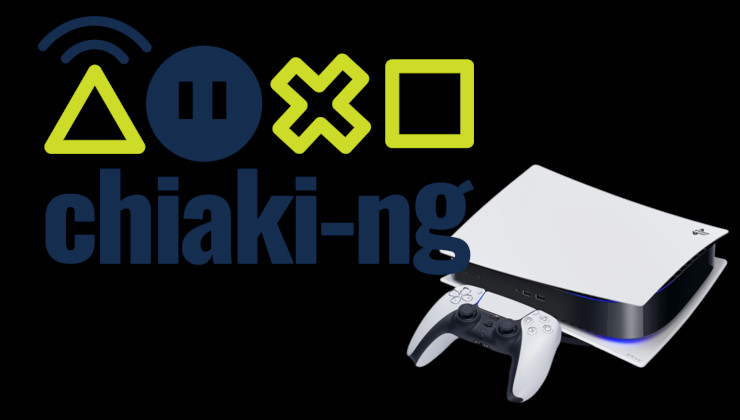As an update to the situation around Canonical planning to drop 32bit support (and Valve saying bye-bye to Ubuntu 19.10+ support), apparently they're not. Instead, the 32bit libraries will be frozen. Are you confused yet? I sure am.
Canonical's Steve Langasek has attempted to clarify the situation. Here's what they said:
I’m sorry that we’ve given anyone the impression that we are “dropping support for i386 applications”. That’s simply not the case. What we are dropping is updates to the i386 libraries, which will be frozen at the 18.04 LTS versions. But there is every intention to ensure that there is a clear story for how i386 applications (including games) can be run on versions of Ubuntu later than 19.10.
That's at least a little better, isn't it? They also said a little further:
[…] since the vast majority of i386-only software is also legacy (closed-source, will never be rebuilt), it also does not generally benefit from newer libraries […]
There's a pretty big difference from not being "included as an architecture", to having them available but frozen and still possible to use, isn't there? It's confusing, since that's not how it was originally explained. This is something that should have been said very clearly from the start.
Perhaps this might not be the epic disaster many people (myself included) thought it might turn out to be. We still have to wait and see how exactly they implement all this, and how it will affect gaming.
There's still going to be confusion and issues though, like upgrading drivers. Touching on that, Langasek said:
32-bit mesa will be available in the Ubuntu 18.04 repository. Note that mesa already gets updates in 18.04 which track the versions from later Ubuntu releases, as part of hardware enablement. If incompatibilities are introduced beyond 20.04 (which is the cutoff for hardware enablement backports for 18.04), we will need to address them on a case-by-case basis.
So it sounds like you're still going to be stuck in some ways. Seems like the proposal is still no good for Wine either (and so Steam Play too).
Quoting: RedfaceNow they actually change their plans: https://ubuntu.com/blog/statement-on-32-bit-i386-packages-for-ubuntu-19-10-and-20-04-lts
"We'll stop shooting ourselves in the foot!" (Too bad there's a hole already.)
Quoting: GuestQuoting: ArtenI don’t think they need hiding. If they can say “this way is beter for our CPU”, then its ok. Benchmark is actual state. Now clear linux isnt officialy suported by steam, if that change...
The scenario that you describe is actually a reality right now. Clear Linux is already highly tuned for Intel platforms. And it's still the best option for AMD hardware.
Can you mention something specific that will change the current situation?
I said that i can be paranoid. I only think it is not great idea. I haven't any proof, only hunch.
Quoting: GuestQuoting: ArtenI don’t think they need hiding. If they can say “this way is beter for our CPU”, then its ok. Benchmark is actual state. Now clear linux isnt officialy suported by steam, if that change...I did some additional research and I found this information:
Clear Linux OS is composed of many different open source software projects and welcomes all contributors to improve the project.
You know, what owner can? Chose which contribution they accept. If they refuse, cotributor can fork, but he can't force intel accept his work.
Quoting: GryxxQuoting: NeverthelessBut as i said earlier in replay- you can't compare it to "native" solution. These are like 5 clicks or so, not mounting disks manually or changing flatpak permissions.Quoting: GryxxQuoting: NeverthelessSo, how you can install games to non-system drive? As i recall, flatpak Steam is isolated from the rest of OS. You cannot go out of flatpak's file system.Quoting: x_wingQuoting: Luke_NukemI just purged all *386 libs from my install, including Steam. Then installed Steam via flatpak...
No. Issues. At. All.
But this doesn't solve HumbleBumble or GOG. Though I do seem to recall and automated GOG->flatpak creator?
And what about proton games? Do they work without problems?
I have no problems at all.
EDIT: Without changing location of Steam, of course. For example leave Steam (and some games) on SSD and keep rest of them on two separate HDD drives.
You can do it with a flatpak override like described here:
https://askubuntu.com/questions/1086529/how-to-give-a-flatpak-app-access-to-a-directory
or you can mount partitions into the [edit: Steam flatpak] packages folder.
Yes, it is a container/sandbox solution. Therefore it is more complex by nature. On the other hand, in the simplest case, if your system is installed on a single big partition, there is no configuration necessary at all. In Linux Mint you install flatpak Steam via gui, and then just use it. Only adding a second Steam library on a second partition is one step more than it already is.
Last edited by Nevertheless on 24 June 2019 at 7:58 pm UTC
Quoting: GuestQuoting: ArtenYou know, what owner can? Chose which contribution they accept. If they refuse, cotributor can fork, but he can't force intel accept his work.
Of course but if you don't want to accept AMD hardware contributions then you don't write exactly this:
"welcomes all contributors to improve the project"
Quoting: GuestQuoting: ArtenYou know, what owner can? Chose which contribution they accept. If they refuse, cotributor can fork, but he can't force intel accept his work.
Of course but if you don't want to accept AMD hardware contributions then you don't write exactly this:
"welcomes all contributors to improve the project"
Contrary, i write exactly that. AMD can bring some optimisation from which can benefit Intel HW, but for everythink from which intel HW haven’t profit but AMD does i try find a PR reason to not acept it. But that only if i have strong position, like if my distro is only one officialy suported by Steam.
Quoting: NeverthelessThat is probably too hard for average user switching from Windows to Linux. And who today has one big partition? I don't see many people buying multi terabytes SSD-es. And HDD are falling out of favor, especially as system disks.Quoting: GryxxQuoting: NeverthelessBut as i said earlier in replay- you can't compare it to "native" solution. These are like 5 clicks or so, not mounting disks manually or changing flatpak permissions.Quoting: GryxxQuoting: NeverthelessSo, how you can install games to non-system drive? As i recall, flatpak Steam is isolated from the rest of OS. You cannot go out of flatpak's file system.Quoting: x_wingQuoting: Luke_NukemI just purged all *386 libs from my install, including Steam. Then installed Steam via flatpak...
No. Issues. At. All.
But this doesn't solve HumbleBumble or GOG. Though I do seem to recall and automated GOG->flatpak creator?
And what about proton games? Do they work without problems?
I have no problems at all.
EDIT: Without changing location of Steam, of course. For example leave Steam (and some games) on SSD and keep rest of them on two separate HDD drives.
You can do it with a flatpak override like described here:
https://askubuntu.com/questions/1086529/how-to-give-a-flatpak-app-access-to-a-directory
or you can mount partitions into the [edit: Steam flatpak] packages folder.
Yes, it is a container/sandbox solution. Therefore it is more complex by nature. On the other hand, in the simplest case, if your system is installed on a single big partition, there is no configuration necessary at all. In Linux Mint you install flatpak Steam via gui, and then just use it. Only adding a second Steam library on a second partition is one step more than it already is.
Quoting: GryxxQuoting: NeverthelessThat is probably too hard for average user switching from Windows to Linux. And who today has one big partition? I don't see many people buying multi terabytes SSD-es. And HDD are falling out of favor, especially as system disks.Quoting: GryxxQuoting: NeverthelessBut as i said earlier in replay- you can't compare it to "native" solution. These are like 5 clicks or so, not mounting disks manually or changing flatpak permissions.Quoting: GryxxQuoting: NeverthelessSo, how you can install games to non-system drive? As i recall, flatpak Steam is isolated from the rest of OS. You cannot go out of flatpak's file system.Quoting: x_wingQuoting: Luke_NukemI just purged all *386 libs from my install, including Steam. Then installed Steam via flatpak...
No. Issues. At. All.
But this doesn't solve HumbleBumble or GOG. Though I do seem to recall and automated GOG->flatpak creator?
And what about proton games? Do they work without problems?
I have no problems at all.
EDIT: Without changing location of Steam, of course. For example leave Steam (and some games) on SSD and keep rest of them on two separate HDD drives.
You can do it with a flatpak override like described here:
https://askubuntu.com/questions/1086529/how-to-give-a-flatpak-app-access-to-a-directory
or you can mount partitions into the [edit: Steam flatpak] packages folder.
Yes, it is a container/sandbox solution. Therefore it is more complex by nature. On the other hand, in the simplest case, if your system is installed on a single big partition, there is no configuration necessary at all. In Linux Mint you install flatpak Steam via gui, and then just use it. Only adding a second Steam library on a second partition is one step more than it already is.
Probably true. I guess there's still room for optimization or for configuration UIs. But not only with flatpaks, partitioning itself is not easy for beginners. And when I think about Nvidia driver installation and update mangement on some distros...
Last edited by Nevertheless on 25 June 2019 at 6:03 am UTC
Quoting: NeverthelessAnd that's the point.Quoting: GryxxQuoting: NeverthelessThat is probably too hard for average user switching from Windows to Linux. And who today has one big partition? I don't see many people buying multi terabytes SSD-es. And HDD are falling out of favor, especially as system disks.Quoting: GryxxQuoting: NeverthelessBut as i said earlier in replay- you can't compare it to "native" solution. These are like 5 clicks or so, not mounting disks manually or changing flatpak permissions.Quoting: GryxxQuoting: NeverthelessSo, how you can install games to non-system drive? As i recall, flatpak Steam is isolated from the rest of OS. You cannot go out of flatpak's file system.Quoting: x_wingQuoting: Luke_NukemI just purged all *386 libs from my install, including Steam. Then installed Steam via flatpak...
No. Issues. At. All.
But this doesn't solve HumbleBumble or GOG. Though I do seem to recall and automated GOG->flatpak creator?
And what about proton games? Do they work without problems?
I have no problems at all.
EDIT: Without changing location of Steam, of course. For example leave Steam (and some games) on SSD and keep rest of them on two separate HDD drives.
You can do it with a flatpak override like described here:
https://askubuntu.com/questions/1086529/how-to-give-a-flatpak-app-access-to-a-directory
or you can mount partitions into the [edit: Steam flatpak] packages folder.
Yes, it is a container/sandbox solution. Therefore it is more complex by nature. On the other hand, in the simplest case, if your system is installed on a single big partition, there is no configuration necessary at all. In Linux Mint you install flatpak Steam via gui, and then just use it. Only adding a second Steam library on a second partition is one step more than it already is.
Probably true. I guess theres still room for optimization or configuration UIs, but not only with flatpaks. When I think about Nvidia driver installation and update mangement on some distros...
Quoting: GryxxQuoting: NeverthelessAnd that's the point.Quoting: GryxxQuoting: NeverthelessThat is probably too hard for average user switching from Windows to Linux. And who today has one big partition? I don't see many people buying multi terabytes SSD-es. And HDD are falling out of favor, especially as system disks.Quoting: GryxxQuoting: NeverthelessBut as i said earlier in replay- you can't compare it to "native" solution. These are like 5 clicks or so, not mounting disks manually or changing flatpak permissions.Quoting: GryxxQuoting: NeverthelessSo, how you can install games to non-system drive? As i recall, flatpak Steam is isolated from the rest of OS. You cannot go out of flatpak's file system.Quoting: x_wingQuoting: Luke_NukemI just purged all *386 libs from my install, including Steam. Then installed Steam via flatpak...
No. Issues. At. All.
But this doesn't solve HumbleBumble or GOG. Though I do seem to recall and automated GOG->flatpak creator?
And what about proton games? Do they work without problems?
I have no problems at all.
EDIT: Without changing location of Steam, of course. For example leave Steam (and some games) on SSD and keep rest of them on two separate HDD drives.
You can do it with a flatpak override like described here:
https://askubuntu.com/questions/1086529/how-to-give-a-flatpak-app-access-to-a-directory
or you can mount partitions into the [edit: Steam flatpak] packages folder.
Yes, it is a container/sandbox solution. Therefore it is more complex by nature. On the other hand, in the simplest case, if your system is installed on a single big partition, there is no configuration necessary at all. In Linux Mint you install flatpak Steam via gui, and then just use it. Only adding a second Steam library on a second partition is one step more than it already is.
Probably true. I guess theres still room for optimization or configuration UIs, but not only with flatpaks. When I think about Nvidia driver installation and update mangement on some distros...
Sorry, I edited while you were already answering! I had forgot a point to make my post clearer. But I think we generally agree that some things should be made easier to configure and understand in the future.
Still I think flatpaks are the right way in principle.
Quoting: NeverthelessI think so. Flatpaks are great when it comes to proprietary software. But at this point Steam takes care of so many things related to gaming that isolating it hurts more then it helps. On the other hand, games as flatpaks or appimages on Steam would be totally awesome.Quoting: GryxxQuoting: NeverthelessAnd that's the point.Quoting: GryxxQuoting: NeverthelessThat is probably too hard for average user switching from Windows to Linux. And who today has one big partition? I don't see many people buying multi terabytes SSD-es. And HDD are falling out of favor, especially as system disks.Quoting: GryxxQuoting: NeverthelessBut as i said earlier in replay- you can't compare it to "native" solution. These are like 5 clicks or so, not mounting disks manually or changing flatpak permissions.Quoting: GryxxQuoting: NeverthelessSo, how you can install games to non-system drive? As i recall, flatpak Steam is isolated from the rest of OS. You cannot go out of flatpak's file system.Quoting: x_wingQuoting: Luke_NukemI just purged all *386 libs from my install, including Steam. Then installed Steam via flatpak...
No. Issues. At. All.
But this doesn't solve HumbleBumble or GOG. Though I do seem to recall and automated GOG->flatpak creator?
And what about proton games? Do they work without problems?
I have no problems at all.
EDIT: Without changing location of Steam, of course. For example leave Steam (and some games) on SSD and keep rest of them on two separate HDD drives.
You can do it with a flatpak override like described here:
https://askubuntu.com/questions/1086529/how-to-give-a-flatpak-app-access-to-a-directory
or you can mount partitions into the [edit: Steam flatpak] packages folder.
Yes, it is a container/sandbox solution. Therefore it is more complex by nature. On the other hand, in the simplest case, if your system is installed on a single big partition, there is no configuration necessary at all. In Linux Mint you install flatpak Steam via gui, and then just use it. Only adding a second Steam library on a second partition is one step more than it already is.
Probably true. I guess theres still room for optimization or configuration UIs, but not only with flatpaks. When I think about Nvidia driver installation and update mangement on some distros...
Sorry, I edited while you were already answering! I had forgot a point to make my post clearer. But I think we generally agree that some things should be made easier to configure and understand in the future.
Still I think flatpaks are the right way in principle.
Quoting: GryxxQuoting: NeverthelessI think so. Flatpaks are great when it comes to proprietary software. But at this point Steam takes care of so many things related to gaming that isolating it hurts more then it helps. On the other hand, games as flatpaks or appimages on Steam would be totally awesome.Quoting: GryxxQuoting: NeverthelessAnd that's the point.Quoting: GryxxQuoting: NeverthelessThat is probably too hard for average user switching from Windows to Linux. And who today has one big partition? I don't see many people buying multi terabytes SSD-es. And HDD are falling out of favor, especially as system disks.Quoting: GryxxQuoting: NeverthelessBut as i said earlier in replay- you can't compare it to "native" solution. These are like 5 clicks or so, not mounting disks manually or changing flatpak permissions.Quoting: GryxxQuoting: NeverthelessSo, how you can install games to non-system drive? As i recall, flatpak Steam is isolated from the rest of OS. You cannot go out of flatpak's file system.Quoting: x_wingQuoting: Luke_NukemI just purged all *386 libs from my install, including Steam. Then installed Steam via flatpak...
No. Issues. At. All.
But this doesn't solve HumbleBumble or GOG. Though I do seem to recall and automated GOG->flatpak creator?
And what about proton games? Do they work without problems?
I have no problems at all.
EDIT: Without changing location of Steam, of course. For example leave Steam (and some games) on SSD and keep rest of them on two separate HDD drives.
You can do it with a flatpak override like described here:
https://askubuntu.com/questions/1086529/how-to-give-a-flatpak-app-access-to-a-directory
or you can mount partitions into the [edit: Steam flatpak] packages folder.
Yes, it is a container/sandbox solution. Therefore it is more complex by nature. On the other hand, in the simplest case, if your system is installed on a single big partition, there is no configuration necessary at all. In Linux Mint you install flatpak Steam via gui, and then just use it. Only adding a second Steam library on a second partition is one step more than it already is.
Probably true. I guess theres still room for optimization or configuration UIs, but not only with flatpaks. When I think about Nvidia driver installation and update mangement on some distros...
Sorry, I edited while you were already answering! I had forgot a point to make my post clearer. But I think we generally agree that some things should be made easier to configure and understand in the future.
Still I think flatpaks are the right way in principle.
I really like it for its sandboxing functionality. I use Flatpak or Firejail for everything proprietary and / or connected to the internet.








See more from me